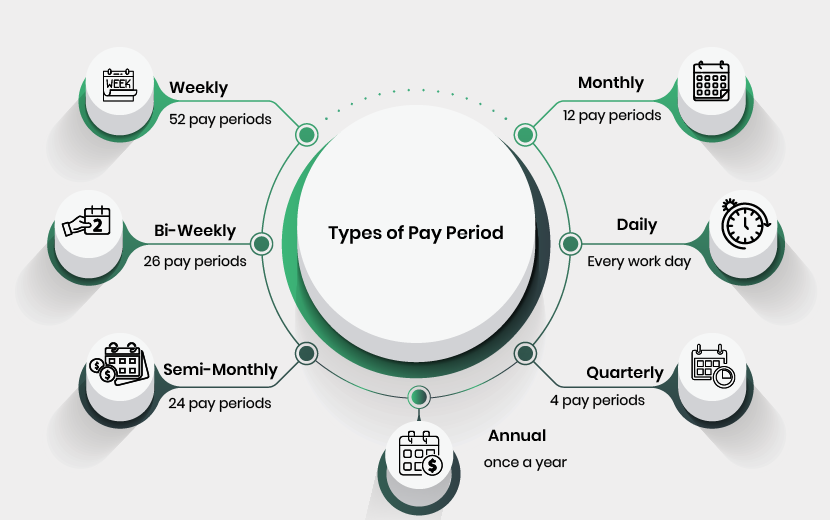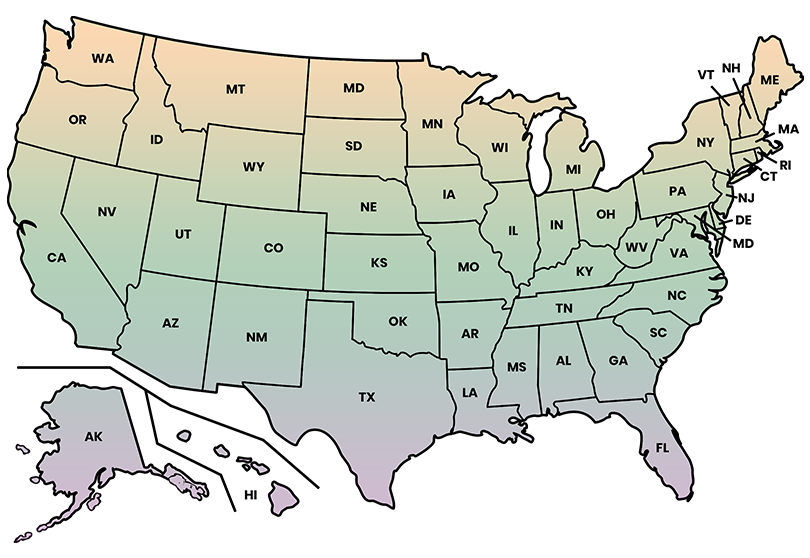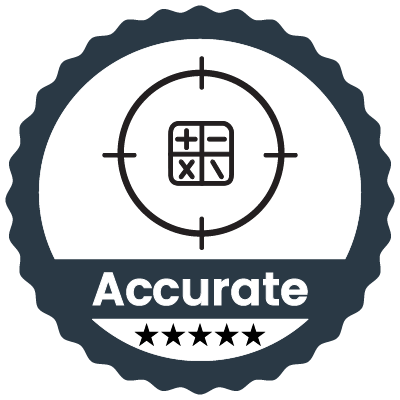For employers, understanding pay periods is essential for accurate pay stub generation. This resource page will help you grasp the importance of pay periods, the different types available, and how they impact the pay stubs you provide to your employees.
- What is a Pay Period?
- Types of Pay Period
- How to Choose the Right Pay Period for Your Business
- Why Pay Periods Matter for Accurate Pay Stubs
- Simplify Pay Period Reporting with SecurePayStubs!
What is a Pay Period?
A pay period is the designated time frame for which an employee’s work hours are recorded and compensated. The pay period you choose determines the frequency of paydays and directly impacts the information shown on the pay stubs you issue. Ensuring accurate pay period selection is crucial for reflecting correct earnings, deductions, and tax withholdings on pay stubs.
Types of Pay Period

Here are the common types of pay periods employers typically use:
- Weekly: Employees receive paychecks every week, resulting in 52 pay periods in a year. This is commonly used in industries where employees work on an hourly basis.
- Bi-Weekly: Paychecks are issued every two weeks, resulting in 26 pay periods in most years. However, in 2024, there will be 27 bi-weekly pay periods due to the calendar year configuration.
- Semi-Monthly: Employees are paid twice a month, typically on the 15th and the last day of the month, leading to 24 pay periods per year. This schedule is often chosen for salaried employees.
- Monthly: Paychecks are issued once a month, resulting in 12 pay periods per year. This option is less common but may be suitable for specific salaried roles.
- Daily: Employees are paid every day they work. This is rare and usually only found in specific industries like gig work or freelance jobs.
- Quarterly: Employees are paid every quarter, resulting in 4 pay periods annually. This is extremely uncommon and typically used for certain types of bonus payments or specific contractual arrangements.
- Annual: Employees are paid once a year. This is extremely rare and generally used only for large bonuses or specific contractual arrangements.
How to Choose the Right Pay Period for Your Business
When deciding on a pay period, consider the following factors:
- Industry Standards: Different industries may have preferred pay periods. For example, weekly or bi-weekly schedules are common in retail, while semi-monthly or monthly schedules are often used for office-based roles.
- Employee Preferences: Some employees may prefer more frequent paydays for easier personal budgeting, while others may favor less frequent schedules for larger paychecks.
- Administrative Efficiency: Choosing a pay period that simplifies the administrative process of running the payroll is important. The easier it is to manage, the better for your business operations.
Why Pay Periods Matter for Accurate Pay Stubs
The pay period selected plays a crucial role in the accuracy of the pay stubs you generate.
Here's why:
- Earnings Calculation: The pay period determines the number of hours or days worked, directly affecting the gross earnings displayed on the pay stub.
- Tax Withholding: Federal and state taxes are withheld based on the pay period. The frequency of pay periods can affect the amount withheld per paycheck.
- Deductions: Employee benefits and other deductions are calculated based on the pay period, ensuring that all deductions are correctly applied and reflected on the pay stub.
- Legal Compliance: Properly identifying the pay period on each pay stub is essential for meeting legal requirements and maintaining accurate payroll records.
Common Questions
1. How many bi-weekly pay periods are there in 2024?
In 2024, there will be 27 bi-weekly pay periods due to the calendar year starting and ending on specific days that create an extra pay period.
2. How many bi-weekly pay periods were there in 2023?
In 2023, there were 26 bi-weekly pay periods. This is the standard number for most years where the calendar aligns with the bi-weekly pay cycle.
3. What is the federal pay period calendar for 2024?
The federal pay period calendar for 2024 follows a standard schedule, with pay periods beginning on a Sunday and ending two weeks later on a Saturday. There are typically 26 pay periods in the year. Official paydays are scheduled for alternating Thursdays, but some financial institutions may credit accounts earlier—it's best to check with your bank or credit union for exact deposit times. For detailed information on pay periods and pay dates for federal employees, you can refer to the following links:
- Pay Period Calendar for 2023
- Pay Period Calendar for 2024
- Pay Period Calendar for 2025
- Pay Period Calendar for 2026
Simplify Pay Period Reporting with SecurePayStubs!
With SecurePayStubs, users can generate accurate pay stubs for any specific pay period by simply entering the necessary details in the Salary Information section.
- Effortless Customization: Input key details such as pay period dates, annual wage, and pay schedule, and our platform handles the rest—accurately reflecting earnings, deductions, and taxes for that period.
- Clear and Accurate Pay Stubs: Every pay stub clearly reflects the designated pay period, helping employees understand their compensation with ease.
- Compliant and Reliable: Rest easy knowing that all calculations are compliant with tax regulations and payroll standards.
Generate precise pay stubs tailored to any pay period today with SecurePayStubs!
This article has been updated from its original publication date of September 2, 2024.




